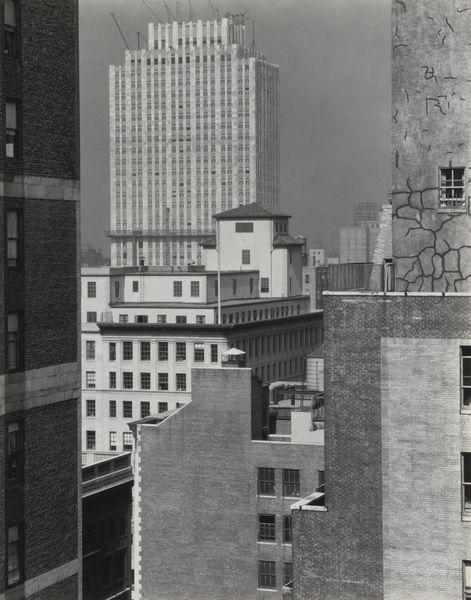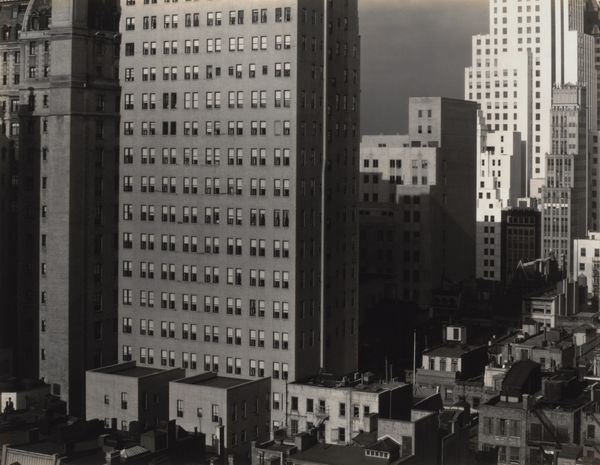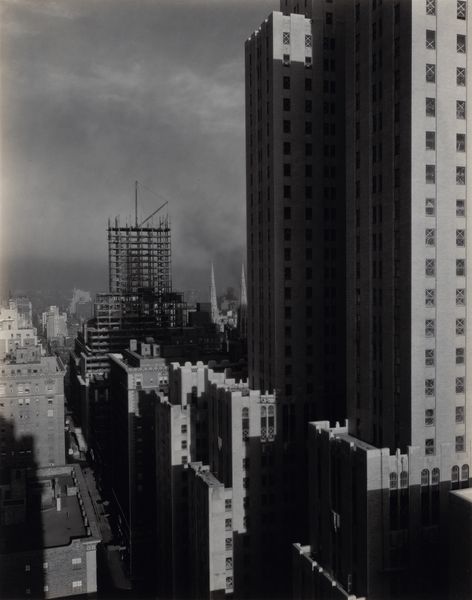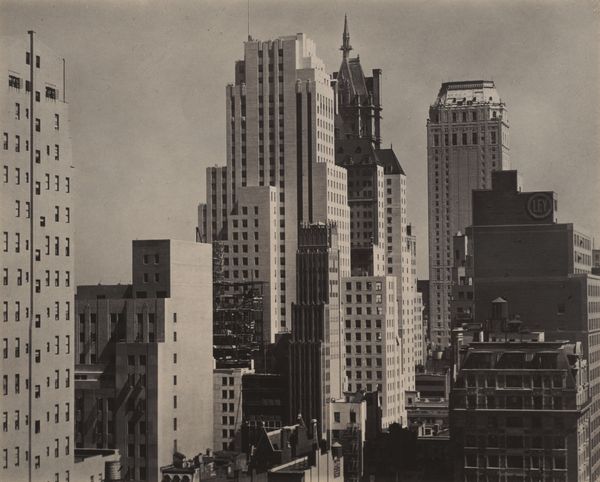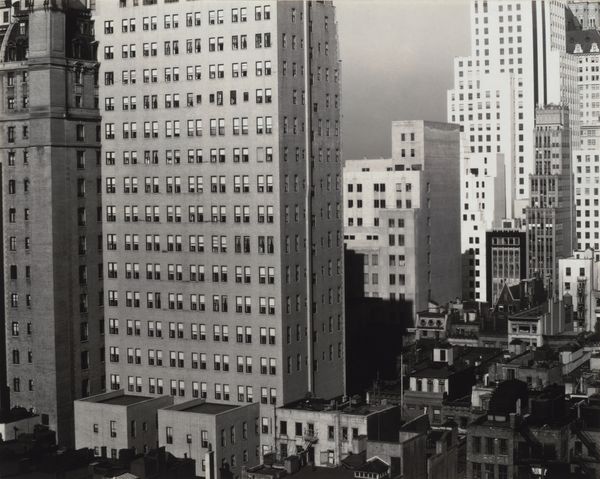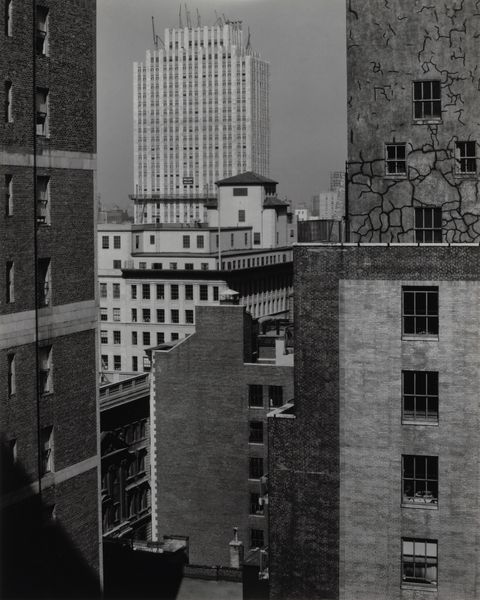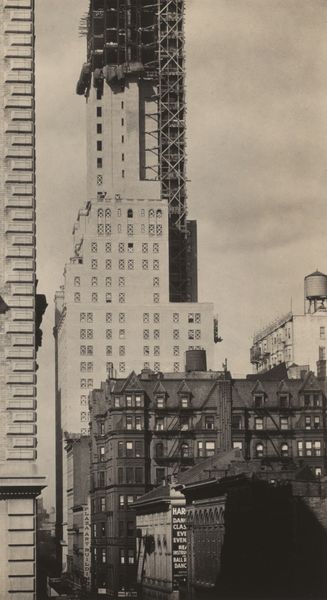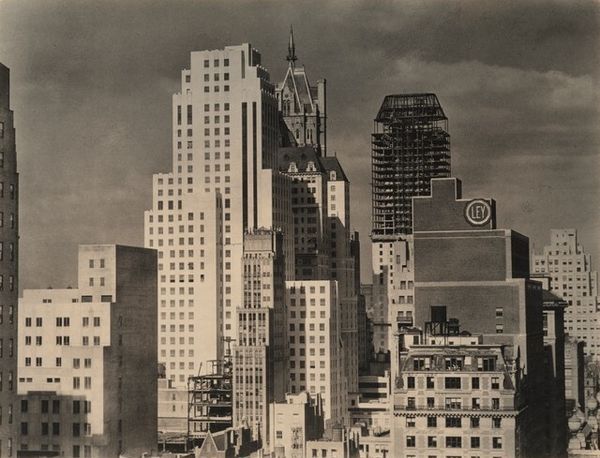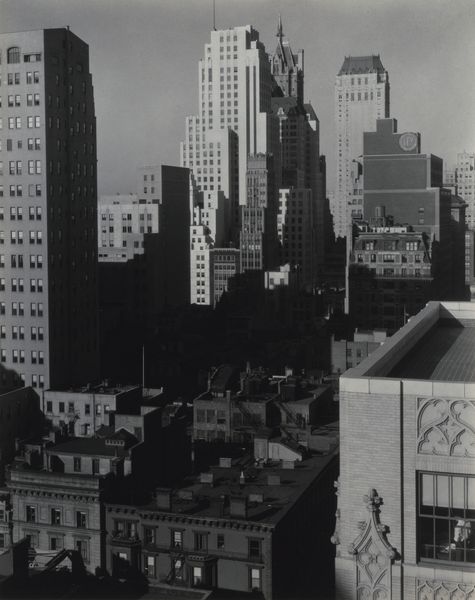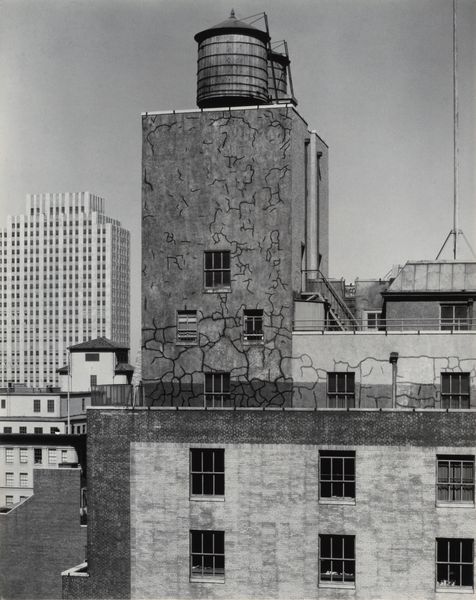
From My Window at An American Place, Southwest Possibly 1932
0:00
0:00
photography, architecture
#
building study
#
street-photography
#
photography
#
derelict
#
geometric
#
cityscape
#
building photography
#
modernism
#
architecture
Dimensions: sheet (trimmed to image): 23.9 × 18.7 cm (9 7/16 × 7 3/8 in.) mount: 56.6 x 43.3 cm (22 5/16 x 17 1/16 in.)
Copyright: National Gallery of Art: CC0 1.0
Curator: Here we have Alfred Stieglitz's photography piece, believed to be from 1932, titled "From My Window at An American Place, Southwest." Editor: My first impression is of a stark, urban claustrophobia, even. The dense arrangement of buildings creates a sense of confinement, a feeling of being trapped within the geometry. Curator: Absolutely. Stieglitz has masterfully arranged geometric forms—rectilinear buildings, windows—to compose the image. It's a study of verticality, punctuated by the tank that crowns the building. Semiotically, it's a cityscape of right angles and precise shapes and varying texture. Editor: But look at what the photo implies historically! This photograph would've captured not just a physical space, but also a particular socioeconomic moment in American history, reflecting on class divides amid the modern skyscraper's rise. The “window” perspective also frames his experience as a wealthy elite as he shoots downward from his penthouse toward more buildings. It excludes views from less advantaged spaces in the city. Curator: I would agree that his personal perspective influences how we understand urban existence through his photographic treatment. There is an alienation from a more collective notion of community; he does this by playing with lines and textures. Editor: It speaks to themes of displacement, power, and erasure—where marginalized voices are not shown at all. How the image frames these absences seems rather politically pointed. Curator: He's not presenting an objective reality, but, in fact, the structures and viewpoints within this framework. Its value lies, however, in composition; by isolating a sliver of the city, Stieglitz distills the architectural landscape into essential forms and tonal relationships. Editor: What I see beyond formalism are echoes of social issues: the implications of modernization and class division that demand further consideration as to whom it excludes or erases through photographic framing. Curator: Thinking about Stieglitz and his contemporaries, he captures modern alienation via form. Editor: And a quiet protest against power, captured in geometric precision and shadow.
Comments
No comments
Be the first to comment and join the conversation on the ultimate creative platform.
